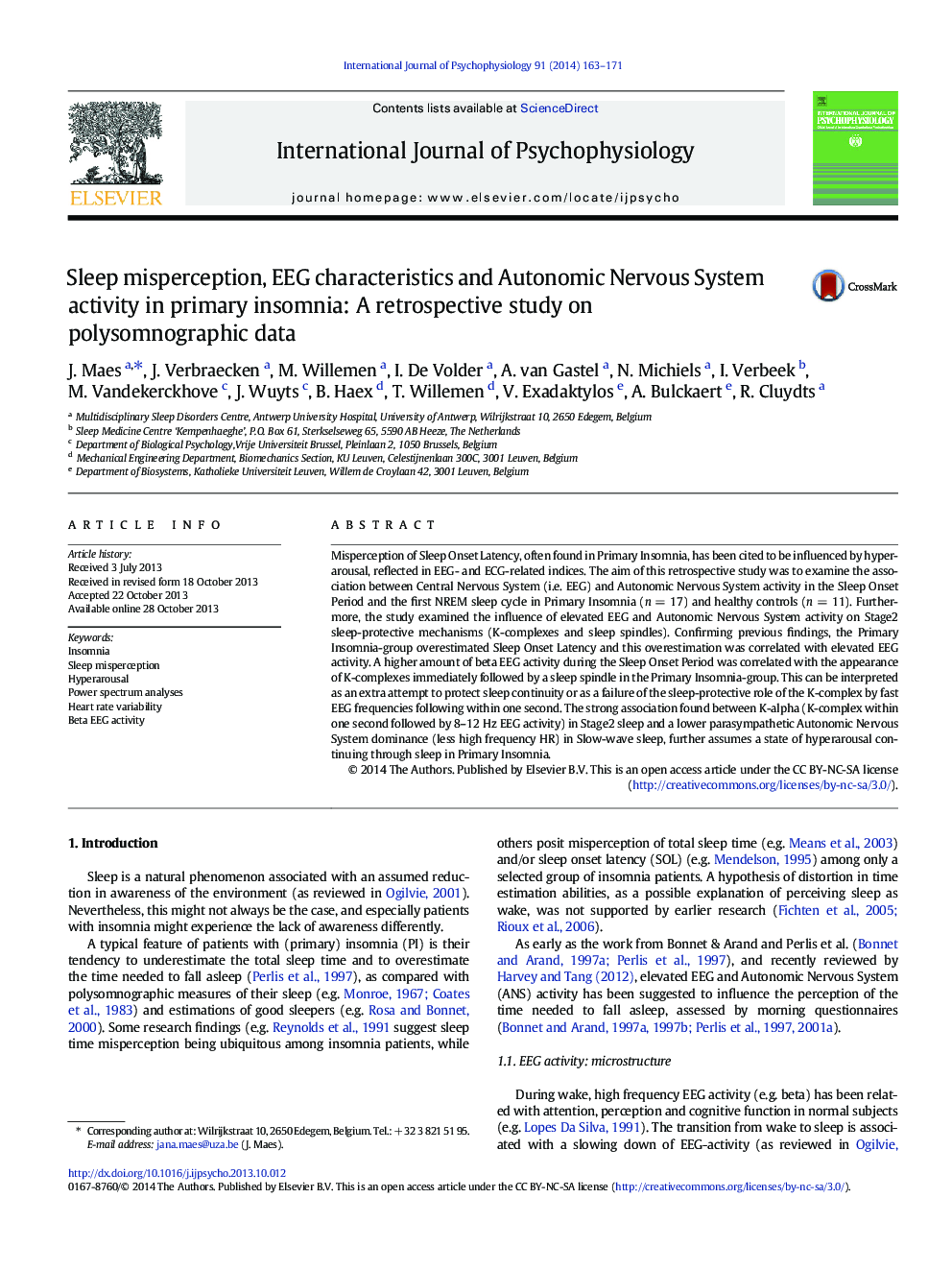| Article ID | Journal | Published Year | Pages | File Type |
|---|---|---|---|---|
| 7295788 | International Journal of Psychophysiology | 2014 | 9 Pages |
Abstract
Misperception of Sleep Onset Latency, often found in Primary Insomnia, has been cited to be influenced by hyperarousal, reflected in EEG- and ECG-related indices. The aim of this retrospective study was to examine the association between Central Nervous System (i.e. EEG) and Autonomic Nervous System activity in the Sleep Onset Period and the first NREM sleep cycle in Primary Insomnia (n = 17) and healthy controls (n = 11). Furthermore, the study examined the influence of elevated EEG and Autonomic Nervous System activity on Stage2 sleep-protective mechanisms (K-complexes and sleep spindles). Confirming previous findings, the Primary Insomnia-group overestimated Sleep Onset Latency and this overestimation was correlated with elevated EEG activity. A higher amount of beta EEG activity during the Sleep Onset Period was correlated with the appearance of K-complexes immediately followed by a sleep spindle in the Primary Insomnia-group. This can be interpreted as an extra attempt to protect sleep continuity or as a failure of the sleep-protective role of the K-complex by fast EEG frequencies following within one second. The strong association found between K-alpha (K-complex within one second followed by 8-12 Hz EEG activity) in Stage2 sleep and a lower parasympathetic Autonomic Nervous System dominance (less high frequency HR) in Slow-wave sleep, further assumes a state of hyperarousal continuing through sleep in Primary Insomnia.
Related Topics
Life Sciences
Neuroscience
Behavioral Neuroscience
Authors
J. Maes, J. Verbraecken, M. Willemen, I. De Volder, A. van Gastel, N. Michiels, I. Verbeek, M. Vandekerckhove, J. Wuyts, B. Haex, T. Willemen, V. Exadaktylos, A. Bulckaert, R. Cluydts,
